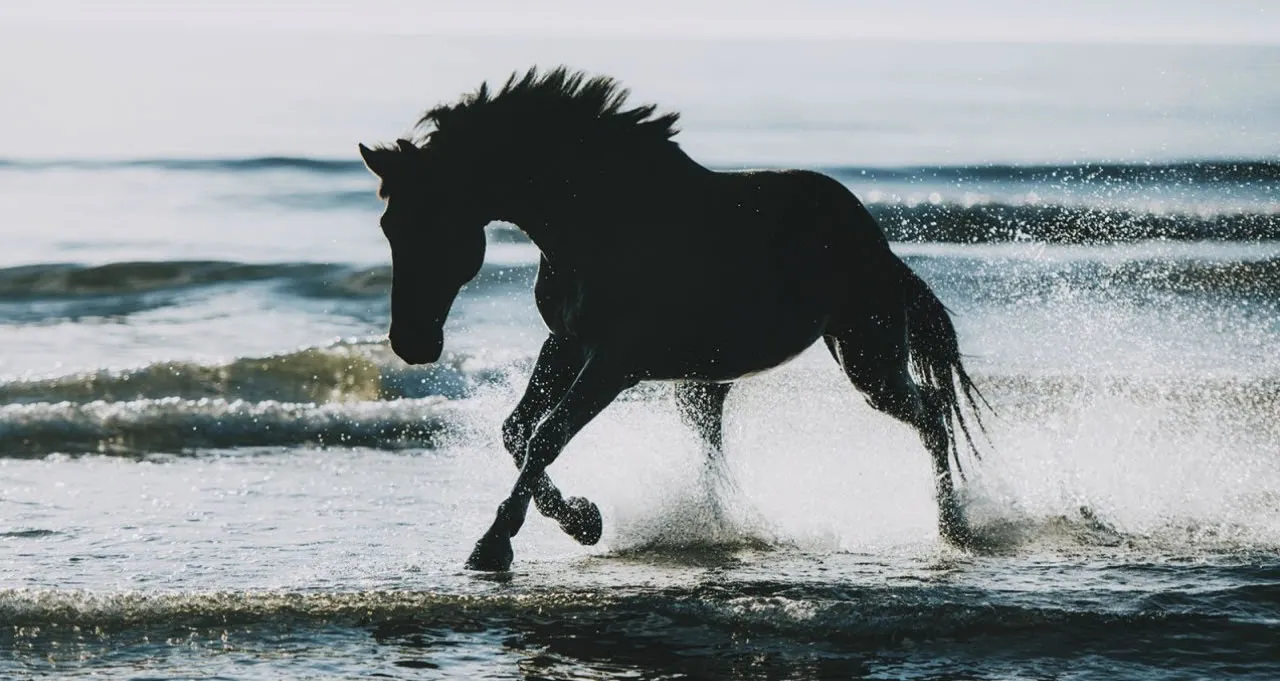Like many animals, a horse’s hearing is more sensitive than a typical human’s. Horses can hear frequencies of up to 33500 Hz, as opposed to the top of the human range, which is 20,000 Hz, so while not as sensitive as that of a dog or a cat, a horse is able to perceive much higher pitches than that of a human.
This, in part, explains why horses are likely to “spook” at sudden noises- they are more sensitive to such stimuli than we humans are. So, here are some facts about horses and music that might be if you tune in when is the next major horse race.

Best Music Genres For Horses
Playing the right kind of music for your horses can help calm them down, particularly during times when they are anxious. It can help keep your horse regulated during visits with the farrier, floater, or vet, and can also help mask the sounds of medical or grooming equipment. Playing music during a storm is also helpful for horses who spook at the sound of thunder.
That being said, what are the best selections of pieces to play for your horse? Does your horse want to rock out, or vibe to some chill beats? Let’s look at some of the most popular genres horse owners and managers use to soothe their savage, high-strung beasts.
Country
This may seem like a stereotype, but there’s a logic behind it.
Sure, country music is connected to cowboys and the rodeo scene. Many country songs adopt themes such as the wide open prairie and the freedom of the majestic Mustang. Country music is appealing to horse people. It is fitting, therefore, that many barns choose to play it on their stable radios.
There may, however, be more to it than human preference.
Horses take comfort in repetition and predictability. Therefore, melodies and rhythmic patterns that repeat themselves regularly have a natural appeal.
Country music has this simplicity in abundance. Because many country songs are lyrics-focused, the music is structured and repetitive so as to enhance, not distract from, the overall story of the song. As horses appear to have little understanding of the lyrics, however, they perceive the voice as just another instrument, providing a slight bit of pronunciation variation but similar patterns of rhythm and melody.
In fact, in 2013, equine science student Clare Carter observed that while horses were soothed by country music as well as classical music, they actually grew agitated when exposed to genres such as rock music and (especially) jazz. These genres are known for their boundary-pushing, experiments with tonality, and, succinctly, their unpredictability.
Classical
The other genre most commonly cited as a “stable favorite” (pun intended) is classical music.
Few pieces from the Classical Period in western music (late 18th-early 19th century) feature lyrics at all. However, while the melodic and rhythmic patterns found in classical pieces are certainly more intricate than what is typically found in modern country music, they are no less prominent. Though orchestral pieces may sound complicated when first introduced, they are meticulously organized, with melodies and motifs being constantly woven through different groups of instrumentation.
The Classical Period also saw the rise of the “pianoforte,” which later became known simply as the piano. The piano is an instrument that, when being played, is able to produce not only melodies but harmonies. While harmonies played by multiple instruments may be interrupted by slight variances in pitch (which would be more obvious to a horse’s sensitive ears), a piano harmonizing by itself is less likely to do so.
Country and classical music, played at perceivable yet soothing volumes, therefore, are your go-to genres if you want to calm your horse with music. But what if your goal is to rouse your horse, or keep a steady beat with his gait?
Dance
If livelier country songs or classical pieces do not appeal, then dance songs might do the trick for increasing energy output. Like country, dance songs have relatively simple melodies that repeat. They also, however, feature a driving beat designed to encourage the listener to get up and move.
Dance songs can also be good for workouts due to their pacing. The tempo, or speed, of a dance song often slowly increases, building to the climax of the song, and then drops afterward. This is similar to how exercise riders pace their mounts during workouts designed to build strength, speed, and fitness.
Pop
Pop songs generally have features similar to classical music- a high level of organization into separate parts that are linked together into patterns, forming (in this case) a chorus, verses, and a bridge- but often in a smaller package. Classical pieces can last hours, while a typical pop song is often no longer than three or four minutes.
This genre can be especially helpful for show horses, as their performance routines typically span about the length of the average pop song. Practicing the routine to a pop song, therefore, can help the rider time the routine.
Horses have good memories concerning pairing certain actions and tunes. If a person sings a certain tune while turning the horse in a circle, the horse will likely come to associate that tune with circling, and begin to spin when they hear it- even if the horse is in their stall or a completely different environment.
Conclusion
In conclusion, while classical music and country music can calm a horse, dance and pop songs are good for getting your horse to go. The key to all of these genres, though, is to pick music that has a lot of simplicity and predictability in its musical structure.
Remember, though, that each individual animal also has its own preferences, so try playing a few pieces for your equine friends to see what they respond to best!




























